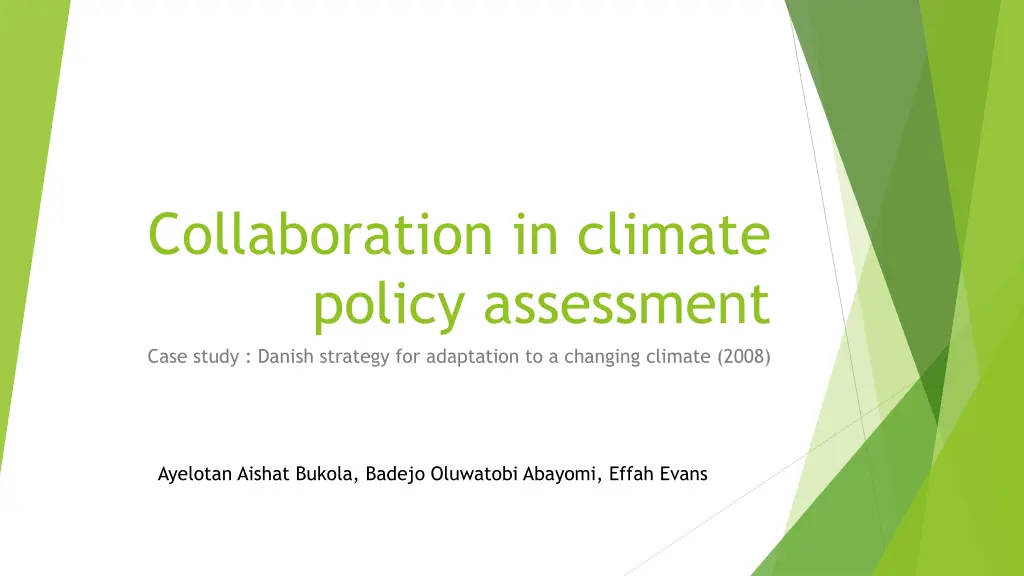
Danish Climate Policy Collaboration Case Study 2008
Explore the collaborative efforts in the Danish strategy for climate change adaptation, involving key collaborators like the Danish government, EU, and international organizations. Learn about the roles of different stakeholders, aims, objectives, and decisions made to incorporate climate adaptation policies into national planning for a sustainable future.
Download Presentation

Please find below an Image/Link to download the presentation.
The content on the website is provided AS IS for your information and personal use only. It may not be sold, licensed, or shared on other websites without obtaining consent from the author. If you encounter any issues during the download, it is possible that the publisher has removed the file from their server.
You are allowed to download the files provided on this website for personal or commercial use, subject to the condition that they are used lawfully. All files are the property of their respective owners.
The content on the website is provided AS IS for your information and personal use only. It may not be sold, licensed, or shared on other websites without obtaining consent from the author.
E N D
Presentation Transcript
Collaboration in climate policy assessment Case study : Danish strategy for adaptation to a changing climate (2008) Ayelotan Aishat Bukola, Badejo Oluwatobi Abayomi, Effah Evans
Background Information Climate change is a reality, and an important part of global warming is due to human activity. Climate change will take place gradually over an extended time horizon and the societal consequences will depend upon how society adapts. This strategy will provide a basis describing how the expected climatic changes could affect a number of areas in Denmark. The strategy will need to be continuously adjusted owing to the unpredictable nature of climate change.
Collaborators in Strategy Design. Danish government as represented by sectorial ministries. European Union. International Organization. Danish Meteorological Institute (DMI) .
Roles of Collaborators EU and international organizations will ensure that international protocols as well as regional climate change policies are incorporated into Danish adaptation strategy. Sectoral ministries will enforce standards to be met in fisheries and coastal management, agriculture and forestry, water and energy supply, building and nature management as well as health adaptation programmes for public health emergency management. Danish government will provide an enabling environment as well as financial facility for the assessment and adaptation process. Danish Meteorological Institute will provide up to date information in global, regional and local climate change to aid in the design of the adaptation strategy.
Aims and Objectives of Strategy The specific objective of the strategy is to incorporate climate change adaptation policies into Danish national planning and development. The goals are designed to be attainable within 10years from 2008. The strategy is expected to benefit individual citizens, business owners and the government. The strategy aims to meet Denmark's reduction commitment of 21% of 1990 emissions of greenhouse gases. Reduction in economic and environmental cost to authorities in situations of natural disaster Benefits Individuals and business owners are protected from consequences of climate change
Decisions for Adaptation Strategy The establishment of a coordinating unit for research in climate change adaptation. Creation of web portal for climate change adaptation by the government to provide relevant knowledge to all stakeholders. Goal-oriented information campaign to inspire the stakeholders and individuals to change their behavior. The development of modelling tools for socio-economic evaluation of measures in the climate change adaptation area.


